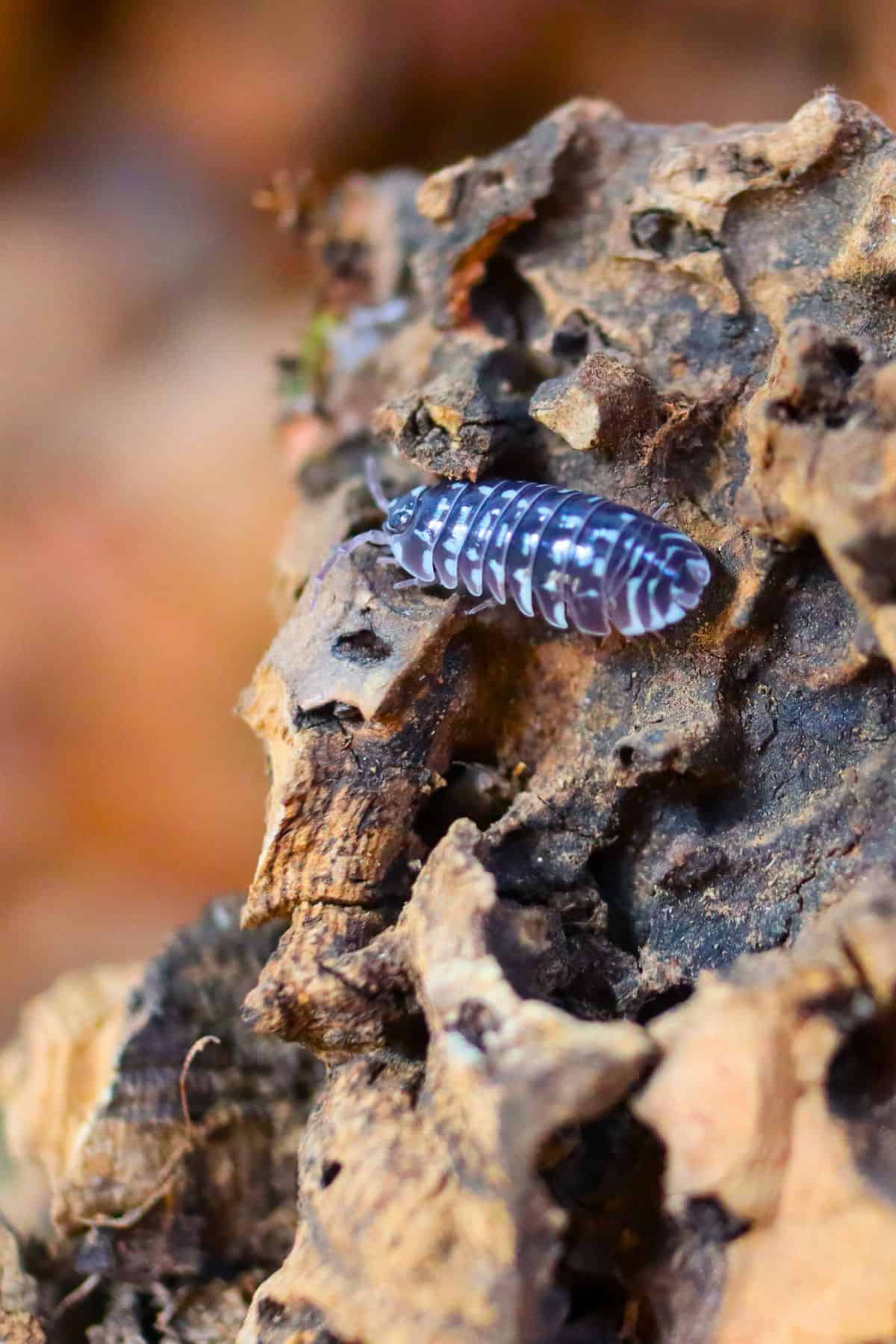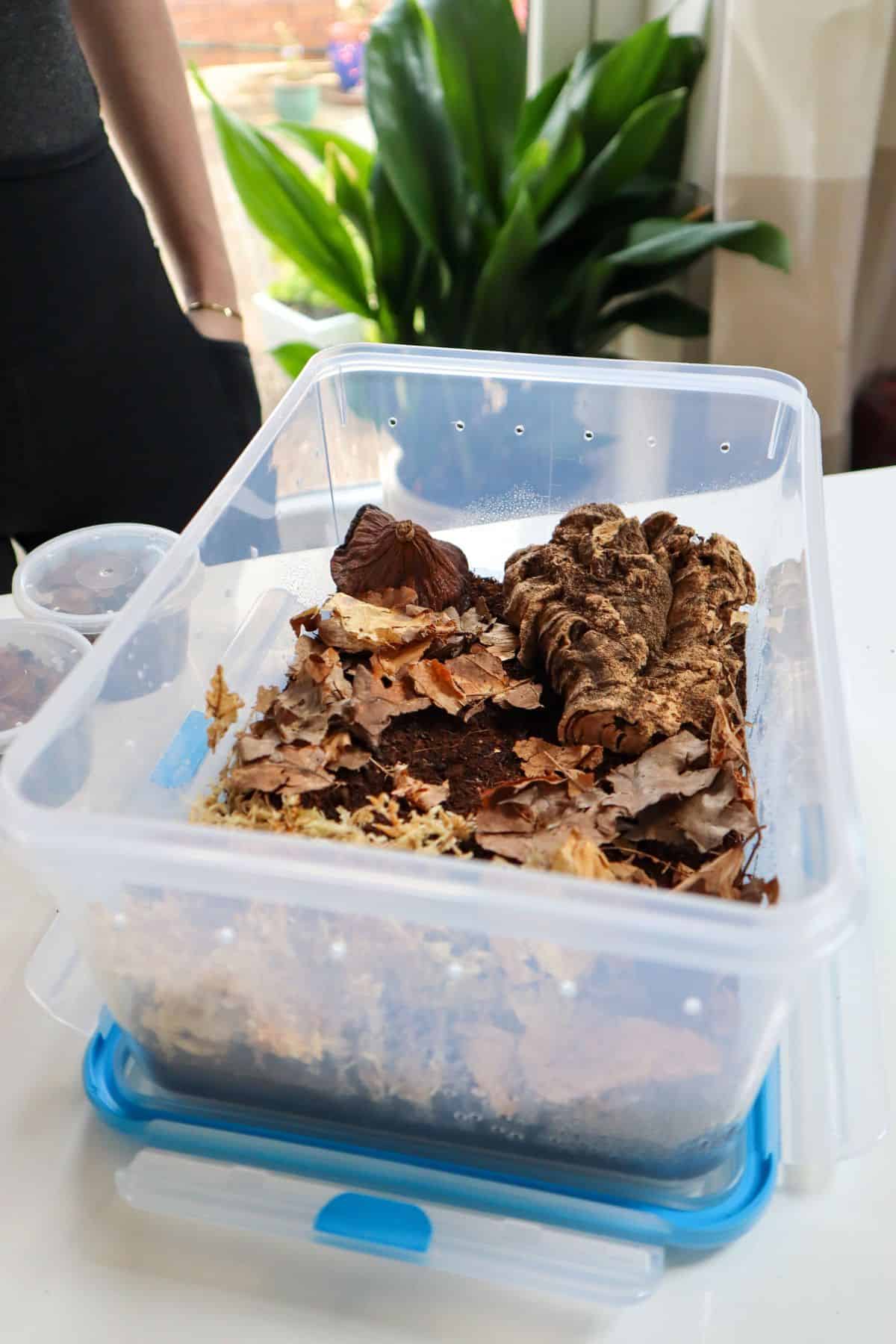Something for the safari seekers amongst us.
Zebra Isopods offer an exciting opportunity to get up close and personal with a herd of stripey wonders.
Albeit, super tiny ones.
If you’re looking for an easy entry into the world of isopod pets (or just want a cool new addition to your collection) Armadillidium maculatum ‘Zebra’ is a fantastic choice.
Read on to find out how to best use and care for this magnificent beast.

Terrarium Tribe is reader-supported. When you purchase through links on our site, we may earn an affiliate commission (at no further cost to you). 💜
Zebra Isopods Overview
Zebra Isopods are an OG of the isopod world.
One of the first isopod types to be kept as a pet and enjoyed for their care and aesthetics, rather than just being a cleanup tool in a terrarium/vivarium.
It’s okay to be effective and fashionable, right? (they’re originally from France, after all).
Though they belong to the same family as the common pill bug (Armadillidium maculatum), it’s easy to see why this particular variation stood out to prospective keepers.
With their classic black and white stripes, they’re going to go well with any outfit environment.

Benefits of Zebra Isopods
Zebra Isopods continue to be one of the most popular species on the market, so they must be doing something right.
Here are some of their standout features.
- Easy to care for – Overall, Zebra Isopods are pretty resilient and have very straightforward care requirements. They make a great first isopod for beginners.
- Aesthetic – What can I say? These stripey wonders are simply gorgeous and there are both Chocolate Zebra Isopods and Yellow Zebra Isopods too!

- Active – Part of being able to enjoy a stunning isopod pet is being able to actually see them… Thankfully, Zebra Isopods are very active and not too shy once they’ve settled in.
- Affordable and easily available – One of the perks of being popular is that Zebra Isopods are easy to come by and remain one of the cheapest varieties on offer.
- Easy to handle – As one of the slower and larger isopod varieties, they’re not too difficult to manage if you’d like to handle one or two at a time.
👉 Convinced? Grab some Zebra Isopods from our shop.

Zebra Isopods Care
Habitat
The overall size requirements of the enclosure are somewhat dependent on the size of the colony, but seeing as these isopods are on the larger side – it follows that you’ll need a reasonably sized container, too.
They also need plenty of ventilation, so you’ll need to opt for a container with a partial seal, or you’ll need to get drilling to make your own vents…

Though they’re not amazing climbers, feel free to cover any vents with a fine mesh to prevent any jailbreaks.
Their mature size, high activity, and need for ventilation mean they’re not a great fit for the smallest of containers (both literally and figuratively). Tiny Tupperware boxes or planted bottle terrariums just aren’t going to do the trick with these larger critters.
We always recommend you pop some cork bark in their habitat too.
It’s the ideal natural hiding space for them, that doubles as a long-term snack too.
Substrate
For substrate, a classic tropical terrarium mix is always a great choice (e.g., ABG mix).
Something with plenty of coco coir and sphagnum moss for moisture retention and a nice loose texture for burrowing, covered with leaf litter for nutrition and hiding spot opportunities.

👉 You can grab a bag of organic leaf litter right here on our shop.
I like to use earthworm castings in all my substrates, and that can really help as a source of nutrition for both plants and isopods.
Zebra Isopods do appreciate a moisture gradient if possible, meaning a section that’s a bit dryer for them.
Which can be tricky when misting (especially with automated misting systems), but some creatively placed hardscape items should be able to shield a chosen area.
Temperature and Humidity
Zebra Isopods do prefer warmer conditions, but nothing crazy.
Ideally, between 75-80°F (21-26°C), so slightly above a typical room temperature.
This should be easily achieved in most vivariums with artificial lighting and/or heat mats. But, if they’re in a smaller container (or it’s a cold Winter), then it’s best to keep them somewhere warm or pop them on a heating mat.
On the humidity front, I think it’s helpful but probably not a dealbreaker.
After all, they need good ventilation and, ideally, a dry area, too – neither of which is conducive to high humidity.
Food
As part of a bioactive setup, the container should have plenty of decaying organic material in the substrate to drive that nutrient process.
That should form the backbone of the feeding process.
Leaf litter is the easiest and most effective way to provide this, but driftwood can help a lot, too, e.g., cholla wood branches.
Though you can (and should) supplement where possible. This is much more necessary if kept in smaller isolated containers, where you’ll likely have to feed them several times a week.
- Fish food flakes are an easy and convenient supplement. They’re full of protein, and you can always have some to hand.
- Vegetable cuttings are another good option. Pretty much anything you have leftover from your chopping board should do. Just don’t overdo it; just add a little at a time, or the mold growth might outpace your isopods.

- Dedicated isopod food is arguably the best. The formulations will differ depending on the source, but they’re usually well-optimized for isopod health. This Isopod Food blend is a concentrated source of nutrition that can keep them going for ages.
Unfortunately, Armadillidium maculatum is known to snack on moss and softer plants occasionally, so they’re arguably not the best choice for terrariums.

👉 See my Guide to Isopod Food for more.
How to Breed Zebra Isopods
Zebra Isopods are easy to reproduce overall.
Provided you have a big enough colony that’s happy and healthy, nature should take its course without any outside influence.

Where to Find Zebra Isopods for Sale?
Being one of the most popular isopod species on the market, they’re not too difficult to get your hands on.
In fact, we’ve teamed up with expert breeders, Rubber Ducky Isopods, to sell them directly on our shop.
Along with your Zebra Isopod Culture, you’ll get some sprinkled oak leaf and isopod superfood to get you and your new friends started.
👉 Shop our Zebra Isopods.
Over to You
Do you keep Zebra Isopods and have some care secrets to share?
Let me know in the comments.
For more stripey isopod realness, check out the Panda King Isopods, or for more Armadillidium options, check out the Yellow Spotted Isopods.
Ready to start your colony? You can go ahead and buy isopods on our store today.
